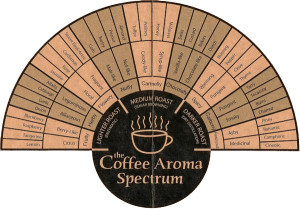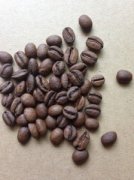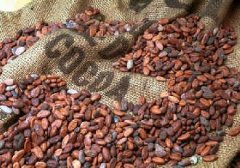How to distinguish the aroma characteristics of coffee
The aroma of coffee is made up of tens of millions of molecules, and these molecules interact to form a sensory map. For tasting, this provides a lot of important information: about the origin of coffee beans that make blended coffee, about the technology of coffee makers. Our sense of smell is very complex, and the mucous membrane of about 2 square centimeters is filled with sensory nerves, which can recognize different molecules and transmit this information to the brain. If there is a weakness, it is that our brains pay less and less attention to the signals sent by our olfactory organs. Our ability to extract olfactory information is not as good as that of visual images.
We can easily extract an image, but we may not be able to extract smell information. For example, when you hear a person's name, you will imagine his appearance and describe him in detail, but only when there is a similar scent of a flower at the scene can we remember the scent of the flower. Only through constant training can we store this olfactory information, but the key does not lie in ourselves. Fragrance features are not only difficult to identify, but also difficult to communicate. In other words, the most important part of our sensory analysis is difficult to measure objectively. When it comes to coffee, this is even more difficult: more than 1000 molecules can arouse our olfactory response, first naturally synthesized by plants and then by multiple programs before final baking. Each molecule carries a message, and when combined with other information, it produces something completely different. If 26 letters allow us to write countless poems and 7 notes allow us to write countless movements, how many emotions can 1000 active molecules carry? Olfactory organs are the only organs that need to work twice: first the act of smelling directly, then the olfactory aftertaste or experience of coffee after drinking or swallowing it. What's the difference?
In the first case, because of the high temperature, the molecules are more volatile, reaching the mucous glands of the cavernous body of the nasal cavity. By dissolving in mucus, they stimulate the receptors. The common aroma of each kind of coffee is the roasting flavor, and only after the entrance can we distinguish the characteristics of good coffee and the professionalism of the maker. After drinking a sip of coffee, its temperature gradually becomes the same as our body temperature. In that case, we would think that our intuition about the aroma of coffee will diminish, but two phenomena change that guess. First of all, the fat in the coffee prolongs the process, which allows the taster to taste it carefully. All this is possible because the aroma components of coffee reach the olfactory mucosa from the back of the throat.
When we smell coffee directly, we can evaluate the intensity and concentration of coffee aroma, roasting intensity and fineness. We can judge good smells and bad smells by the back of the throat. The unpleasant smell is caused by defects in raw coffee, improper roasting or final improper brewing. The good smell is the feeling we can perceive, thanks to the good quality of coffee beans and the good skills of all operators in the production chain. There is also a strong personal evaluation, which can be described as the good feelings brought by a good espresso!

Important Notice :
前街咖啡 FrontStreet Coffee has moved to new addredd:
FrontStreet Coffee Address: 315,Donghua East Road,GuangZhou
Tel:020 38364473
- Prev

The champion talks about the coffee roasting competition
The road to coffee is indeed long, not easy, and good and cherish.
- Next

Relationship between roasting degree and taste of fine coffee
Coffee always gives people a black and bitter stereotype, but in fact, it is like a fruit, sour and sweet. The diversity and variation of the flavor of the lightly roasted manor-grade boutique coffee is no less than that of red wine. You can feel rich fruit, flower and sweet aromas in a good cup of coffee noodles. After trying it, you will definitely gradually like it.
Related
- What is the meaning of lactic acid fermentation with coffee bean treatment?
- How to judge the state of foam by sound?
- How does the latte pull out the unicorn pattern? Come to get for a little trick to improve the flower pull!
- Will flower pulling affect the taste of the latte?
- Do you know the history of coffee?
- The difference between honey treatment and sun washing what is raisin honey treatment?
- What kind of milk can a novice use to make coffee foam to keep the foam longer? The correct method and skills of milking tutorial sharing
- Why do washed coffee beans taste sour? Flavor characteristics of washed Coffee
- Introduction to the skill of how to practice the size and height of water injection around the circle of hand-brewed coffee
- How do beginners practice coffee flower drawing from scratch?

